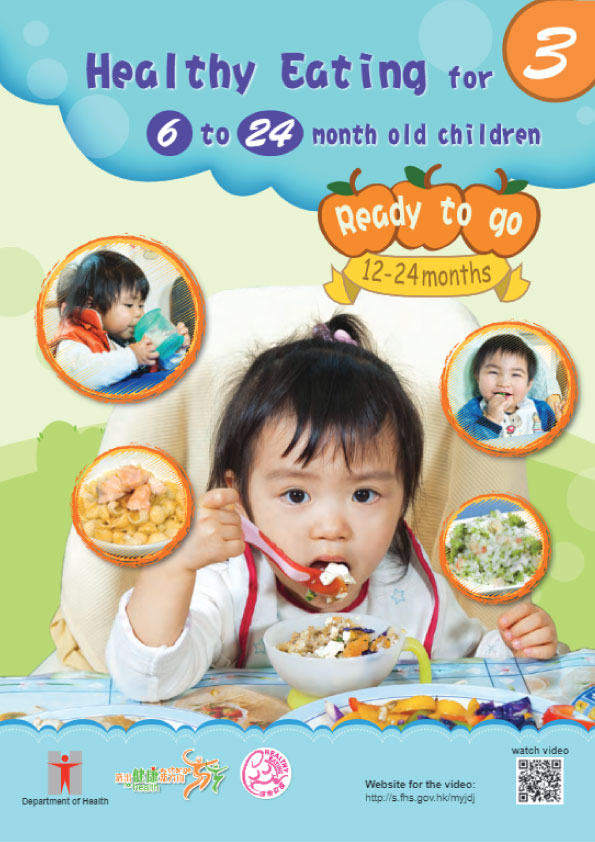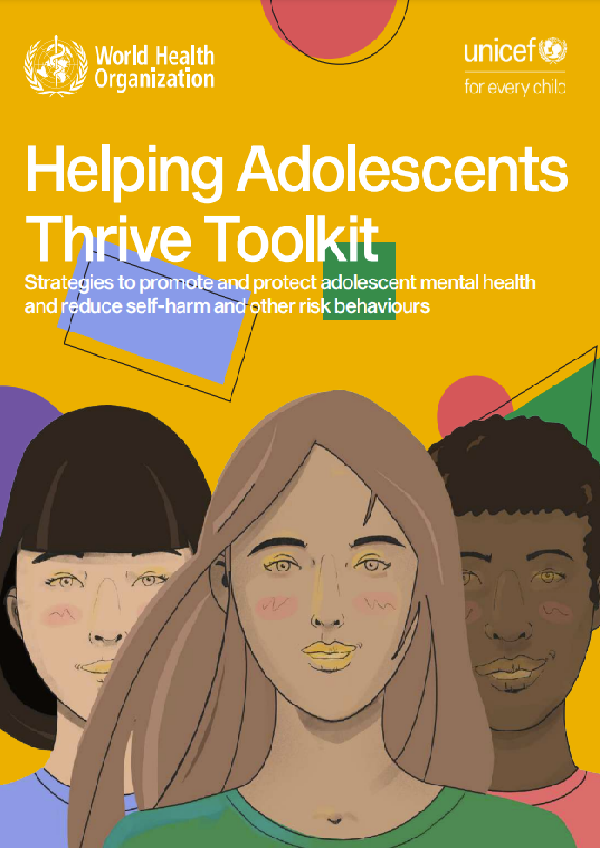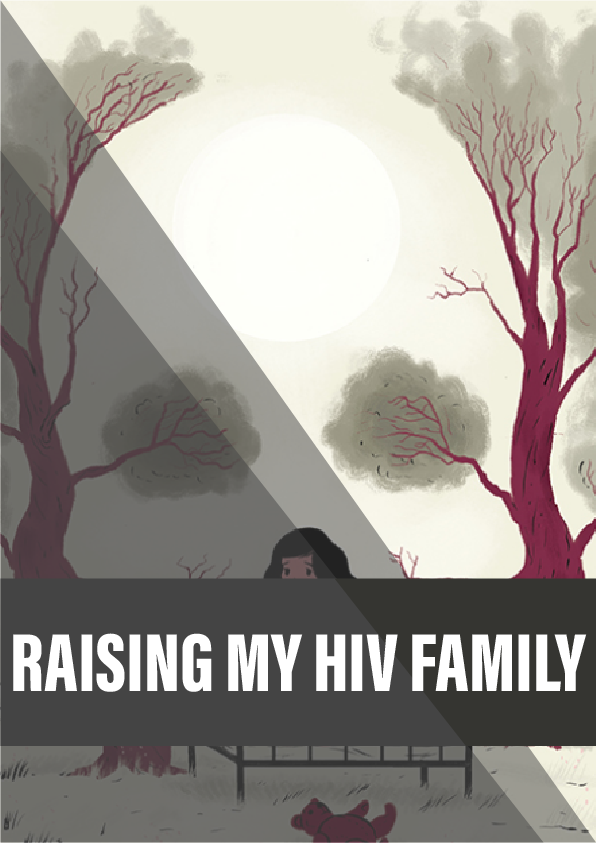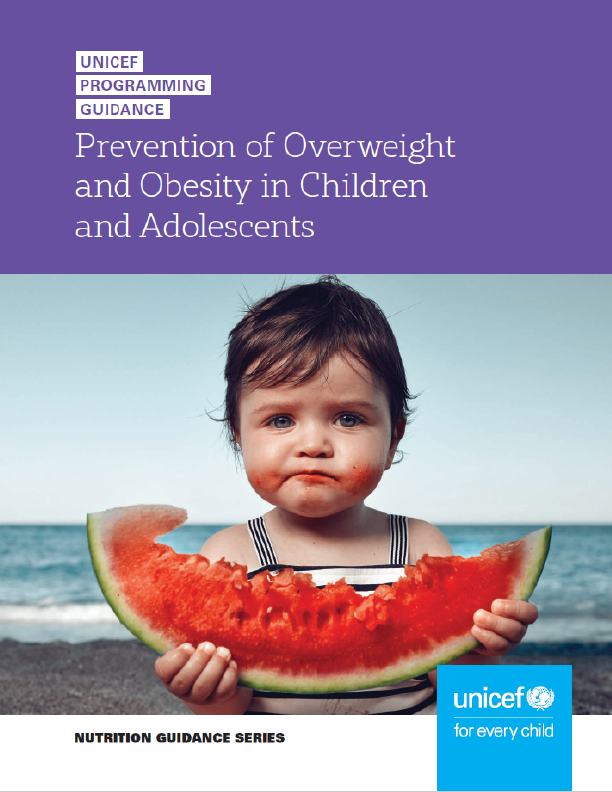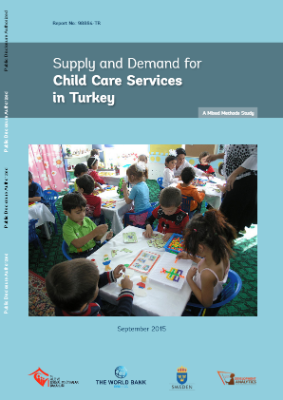Eating behaviours of children at 1 to 2 years old
- Children like eating and sharing food with the family;
- They can use a cup to drink and use a spoon to feed themselves;
- They are less willing to taste new foods than before;
- They get impatient if the mealtime is too long;
- They do not eat much at a time;
- They use actions and words to tell you what they want to eat, and indicate when they are full.
Your child’s growth
Your child still grows quickly but weight gain slows down after he is 1 year old. As he grows taller, he may look less chubby.
Combining foods to make a balanced diet
(Watch related video: http://s.fhs.gov.hk/myjdj)
- Include foods from the 5 food groups for your child every day;
- Offer a variety of foods in turns;
- Offer your child a suitable amount of milk;
- Continue to breastfeed your child.
Daily menu for your child
Grains
- 1 to 2 bowls
- Include some whole grain foods, such as brown rice and whole wheat bread.
Fish, Meat, Eggs and Beans
- 2 to 4 heaped table tablespoons;
- Avoid eating large predatory fish (such as swordfish, sharks or large tuna);
- Store and defrost frozen meat properly. Frozen and fresh meat provides similar nutrients.
Vegetables
- 4 to 8 heaped table tablespoons
Fruits
- ¼ to ½ bowl of fruit slices;
- Fruits provide more dietary fibres than fruit juice;
- Offer your child fruits of different colours
Milk & Milk Products
- 360 to 480 ml
Q&A: Can my child eat food seasoned with salt or sauces?
- A limited amount of salt is fine. High salt intake puts your child at risk for high blood pressure in the future;
- Use ginger, garlic or spring onion as alternatives for seasoning;
- Limit foods high in salt such as sausages, canned foods, foods preserved in salt, and savoury snack.
- Use a suitable amount of vegetable oil when cooking.
For more information, please refer to the food exchange table in the booklet “7-day Healthy Meal Planning Guide for 6 to 24 month old children”.
A suitable amount of milk
(Watch related infomation: http://s.fhs.gov.hk/aify0)
Breastmilk
- Continue breastfeeding your child until she is 2 years old or older
- Breastmilk provides her with antibodies against infection, and is also beneficial to your child’s and your long-term health.
Formula milk
- As your child eats a variety of foods in her meals, milk is no longer the major source of nutrients;
- Your child can drink 360 to 480 ml of milk a day. Offer her milk two to three times a day;
- You can serve milk (about 120 ml) in a small cup with other food at breakfast or as a snack;
- Drinking too much milk will reduce your child’s appetite for other food.
Milk and dairy products
- A child over 1 year old can switch to drinking full-fat cow’s milk;
- You can choose fresh cow’s milk, ultra-high-temperature (UHT) milk, or full-fat milk powder;
- Parents can give yoghurt or cheese in place of milk for some variety;
- When your child reaches 2 years old, she can drink low fat milk;
- Formula milk contains more iron and vitamins than fresh milk. For children who eat little solid food or meat, or are vegetarians, drinking a suitable amount of formula milk can provide additional iron;
- Do not substitute cow’s milk by condensed milk as it is high in sugar.
The amount of calcium provided by 120 ml cow’s milk is same as one slice of cheese or about 100 g of yoghurt.
Note: Children with cow’s milk protein allergy require special formula. Please consult a health professional for more information.
Weaning from the bottle
Staying on the bottle too long can:
- Cause tooth decay in young children;
- Reduce children’s appetite for other foods, as they tend to drink more milk;
- Cause children to become overweight. Wean your child from the bottle when he reaches 1 year old. Weaning becomes harder as he gets older.
Help your child give up the bottle
- First, replace the bottle with a cup for one feeding during the daytime;
- When he gets used to it, switch him to a cup during other milk feedings. By 18 months, stop using the bottle entirely.
Key points
- Let him use a training cup for milk, or drink with a straw. You should sit close to him to help him if necessary;
- Avoid offering your child a cup at the place he is normally bottle-fed;
- If he demands a bottle, offer a pacifier or a bottle of water to comfort him.
Tips for parents
- Your child may protest at first. Be persistent. Respond by giving hugs and kisses rather than giving in;
- Ensure that the whole family works together during the weaning process. This helps your child get through weaning smoothly.
How to cut out the bottle before bedtime?
Note: Avoid exciting activities before bedtime.
- If necessary, give your child some food or milk as the evening snack.
- Then brush his teeth, and lead him to bed.
- Cuddle him and read picture story books with him. As he calms down, he will fall asleep.
How to arrange daily meals?
- Children need 3 meals plus 2 or 3 snacks a day;
- Parents should provide a healthy snack 2 to 3 hours after the main meal to top up her intake of energy and nutrients;
- Arranging your child to dine with the family;
- Organising a regular meal schedule that matches with the family’s and the child’s routines.
Sharing family dishes
- Provide choices in each meal by preparing 2 to 3 dishes with at least 3 to 4 kinds of food;
- Include both foods that she likes and foods that she is not familiar with or dislikes.
Q&A: My baby is sometimes picky with food and eats little. Does she get enough nutrients?
- Children’s appetites change from day to day. Their likes and dislikes of food also vary. They will eat more on certain days and less on the other days;
- Offer your child foods from each food groups in appropriate proportion. Over a period of 1 to 2 weeks, she will get on average what she needs.
Tips for parents
- Sleepy children do not want to eat;
- Avoid giving frequent snacks as this may reduce your child’s appetites for main meals.
Choosing snacks for your child
- Choose foods that are not usually included in family dishes;
- The portion size should be smaller than that in the main meals;
- Sweet foods should only be offered occasionally.
- Limit fruit juice to 120 ml per day and offer juice in a cup. Juices or sugary drink are not alternatives to water.
- Read the nutrition labels for lower sugar, sodium and fat options when buying processed food.
- Fruits, milk, plain yoghurt or cheese, bread, sandwiches, oatmeal, steamed sweet potato and boiled corn can be offered to your child more often.
- Sweetened food should only be given occasionally. Examples are fruit yoghurt added with sugar, plain biscuits, muffin, fruit juice, raisins, breakfast cereals, Chinese bean dessert with kelp or tofu pudding etc.
Adequate water intake
- Offer your child water to drink after meals or snacks and after physical activities;
- When the weather is hot or your child has a fever, she needs more water;
- Put small cups filled with water in places within her reach so that your child can help herself.
Q&A: How can I tell If my child has enough water?
His water intake is adequate if he passes urine once every 3 to 4 hours. The urine should be light in colour and the smell should not be strong.
